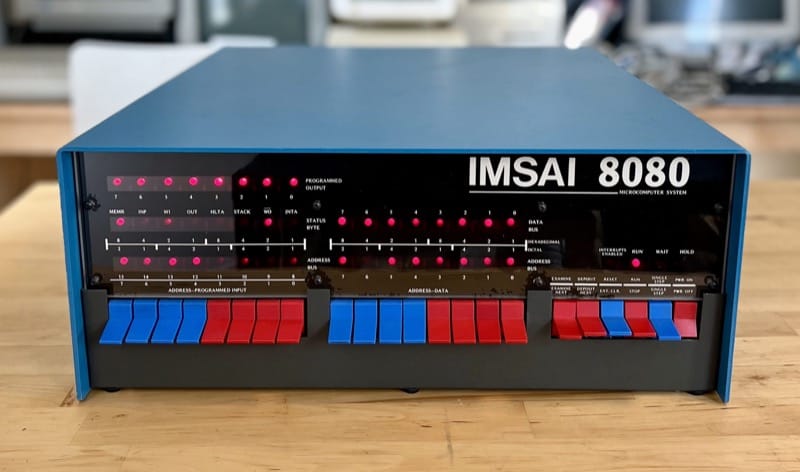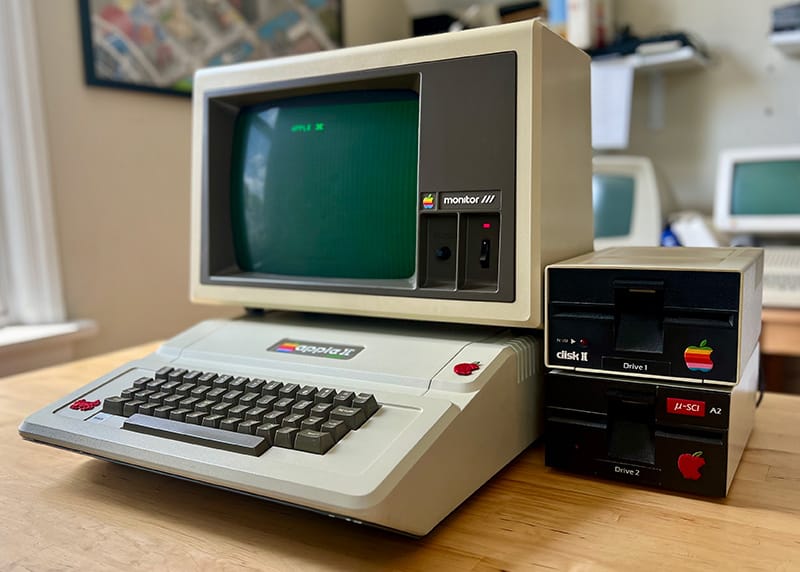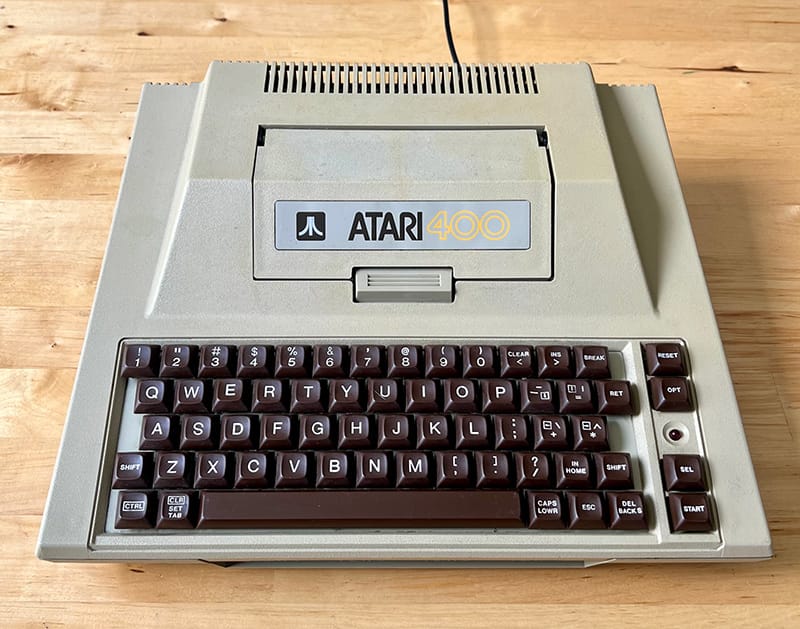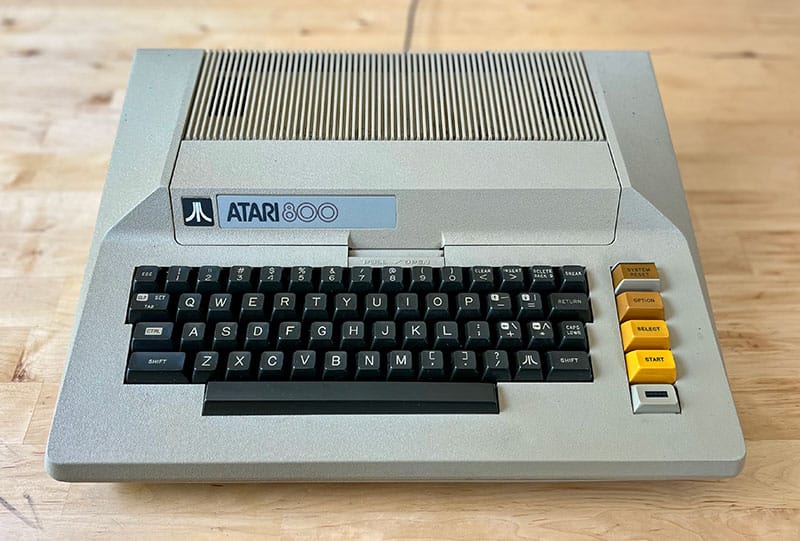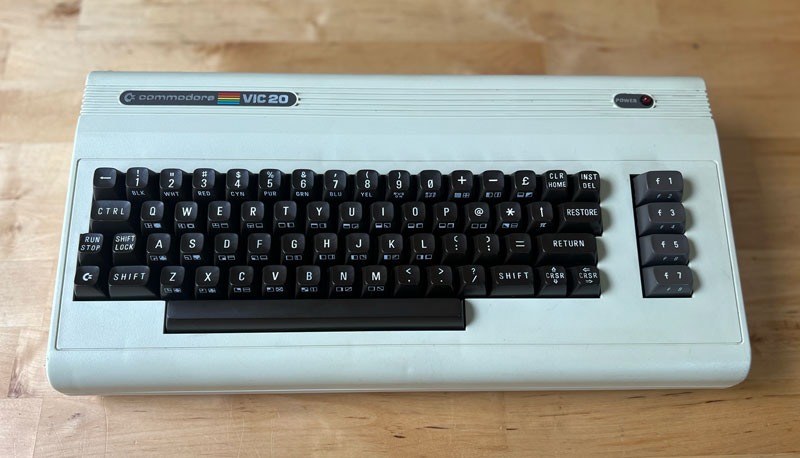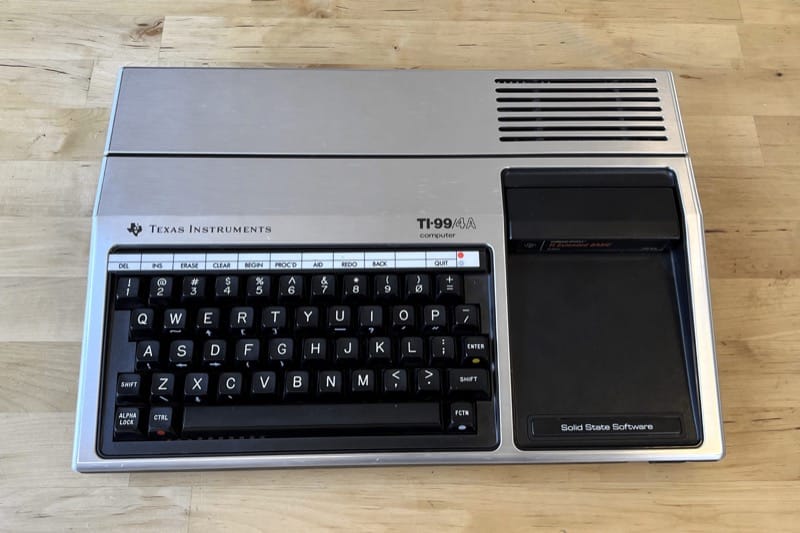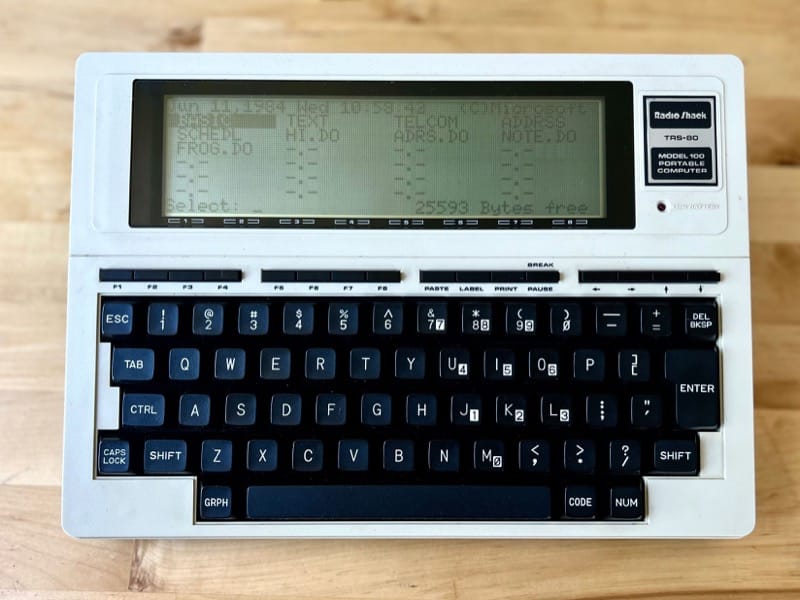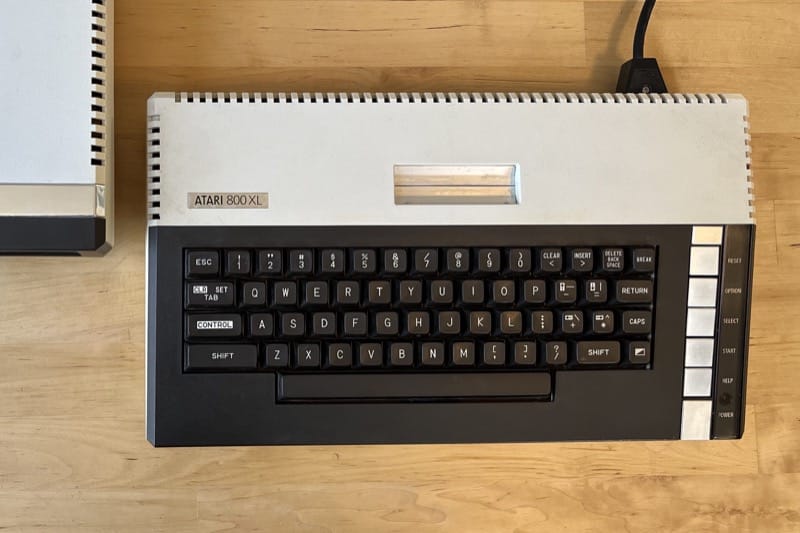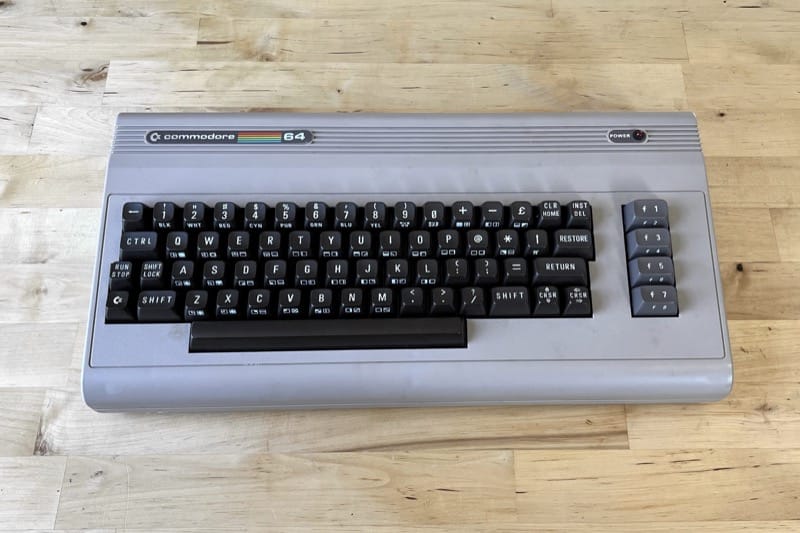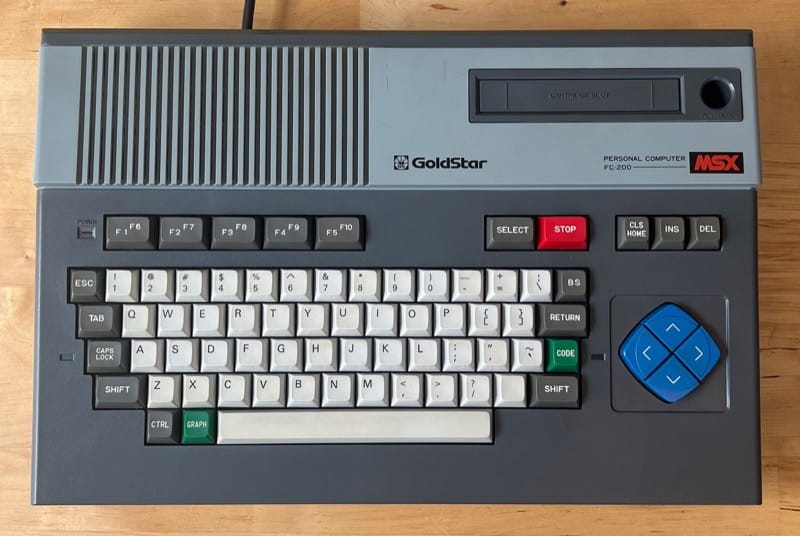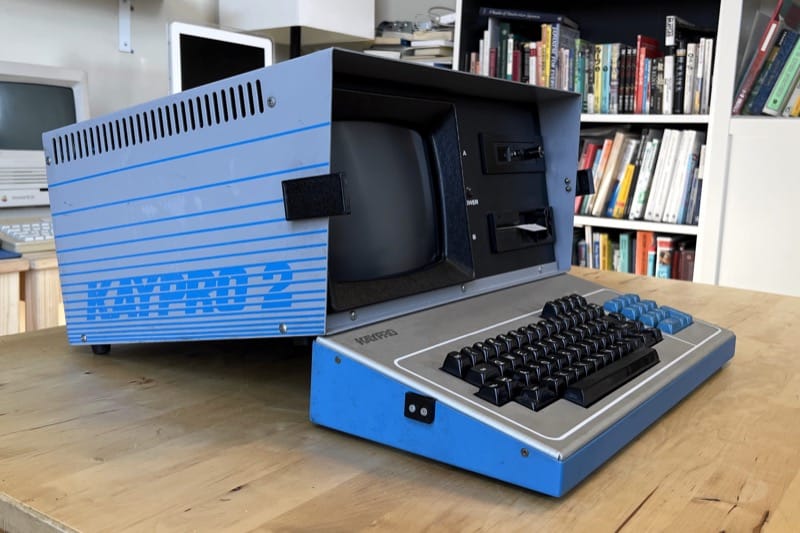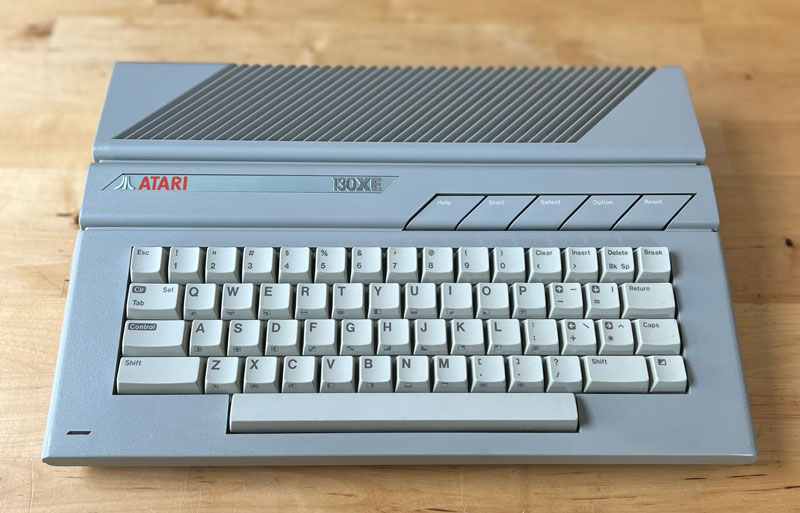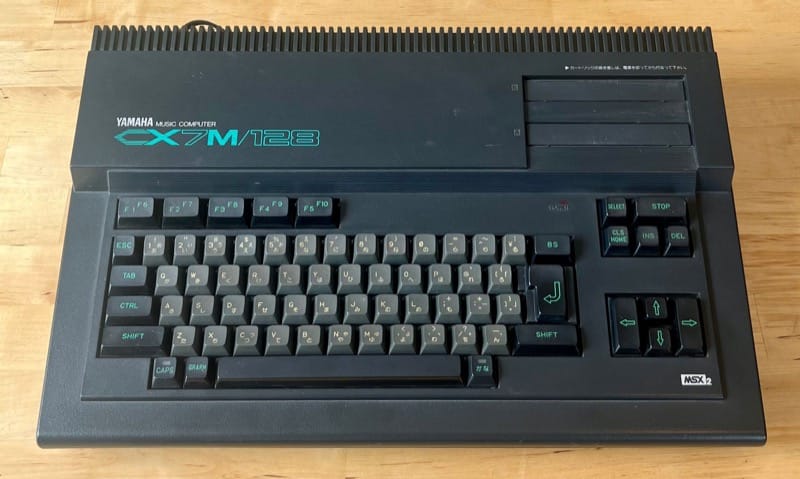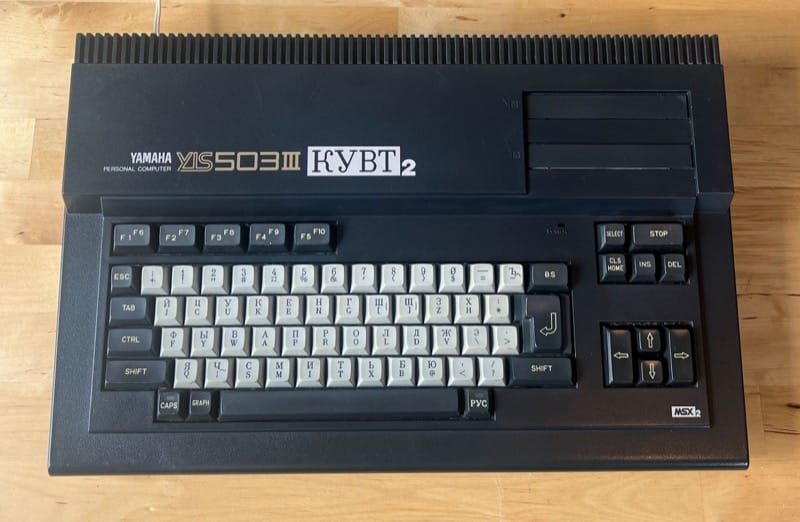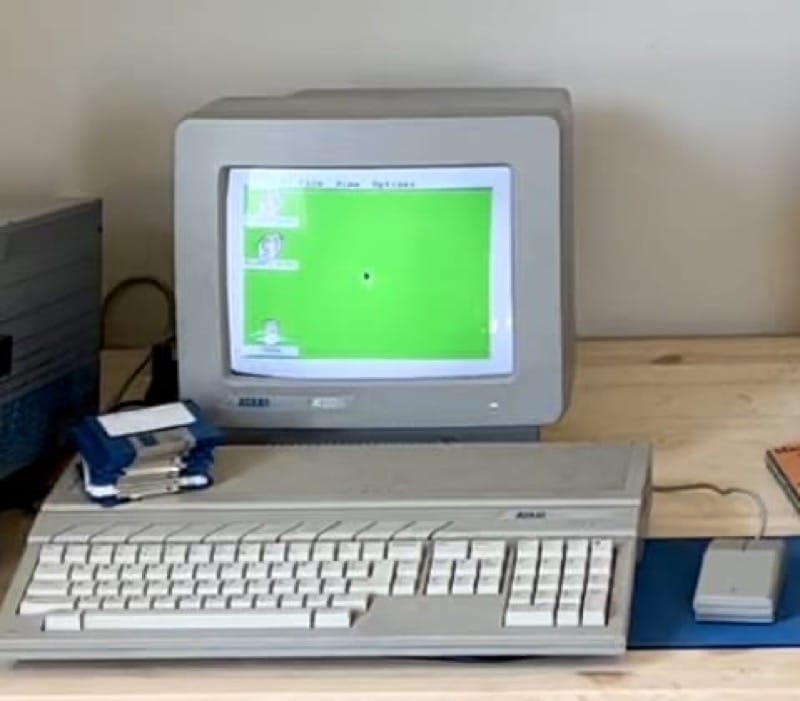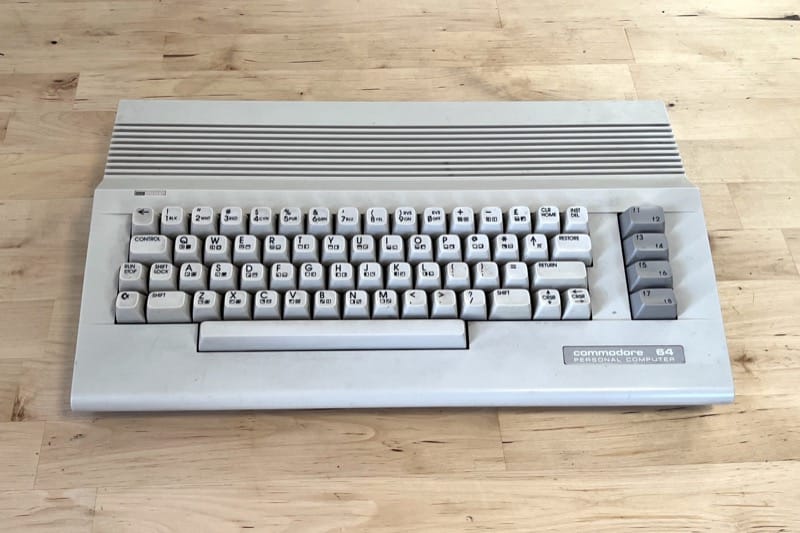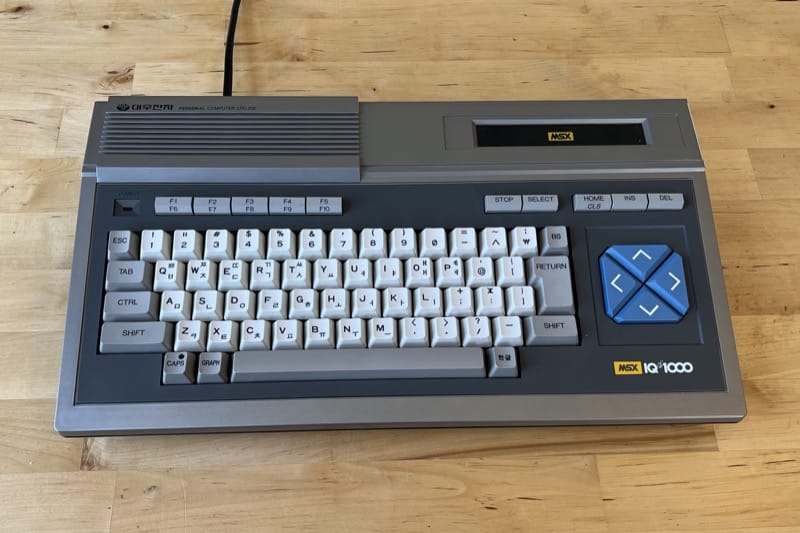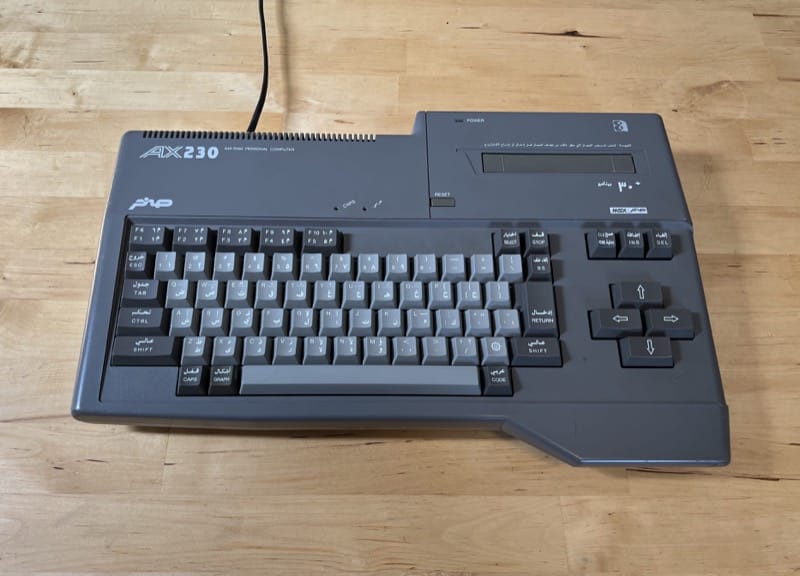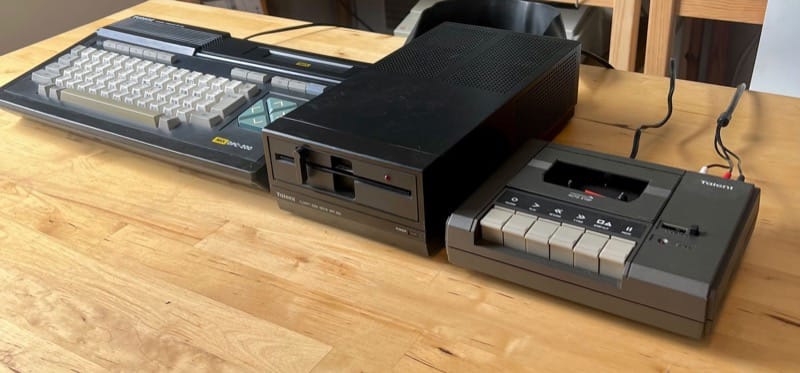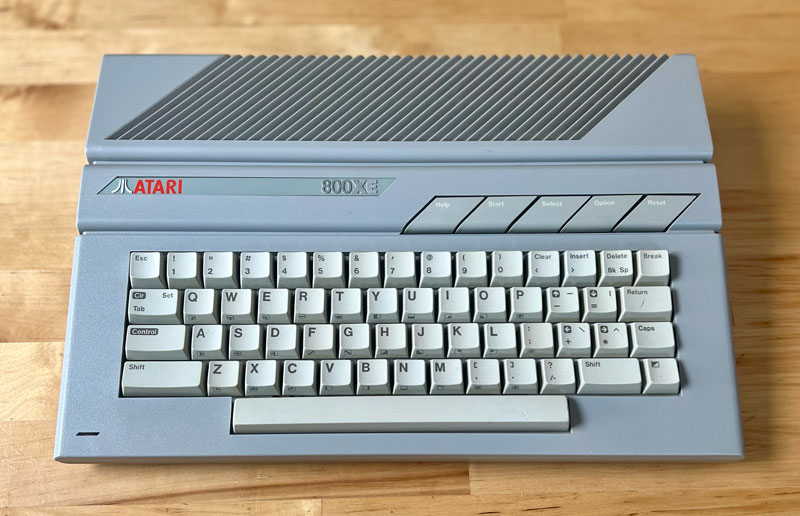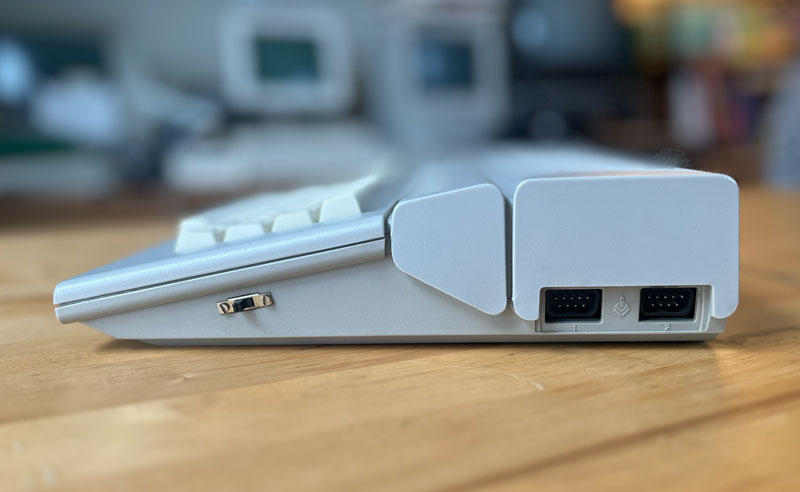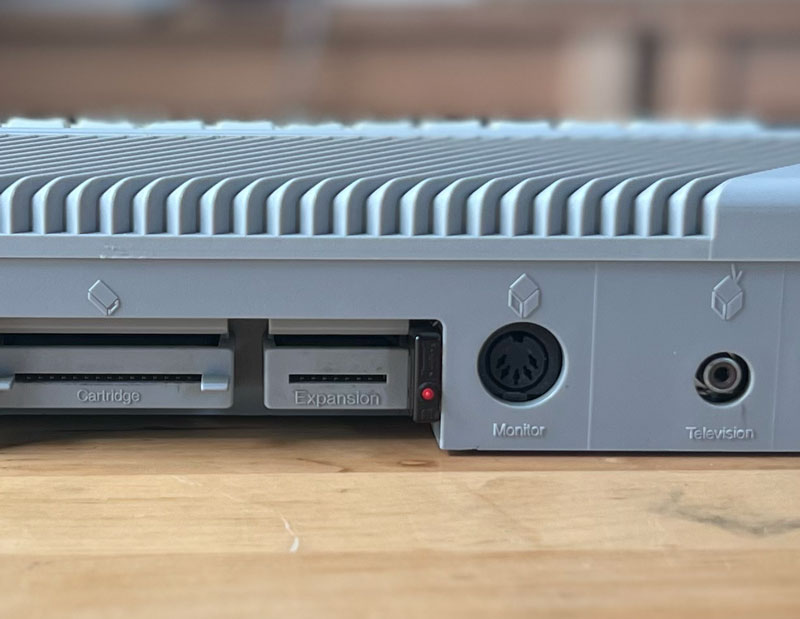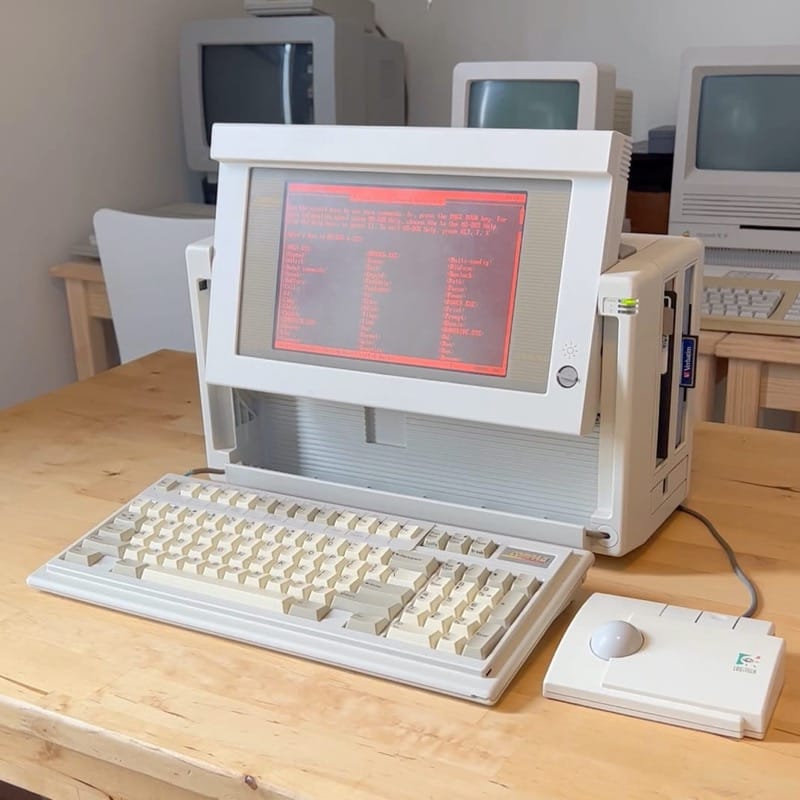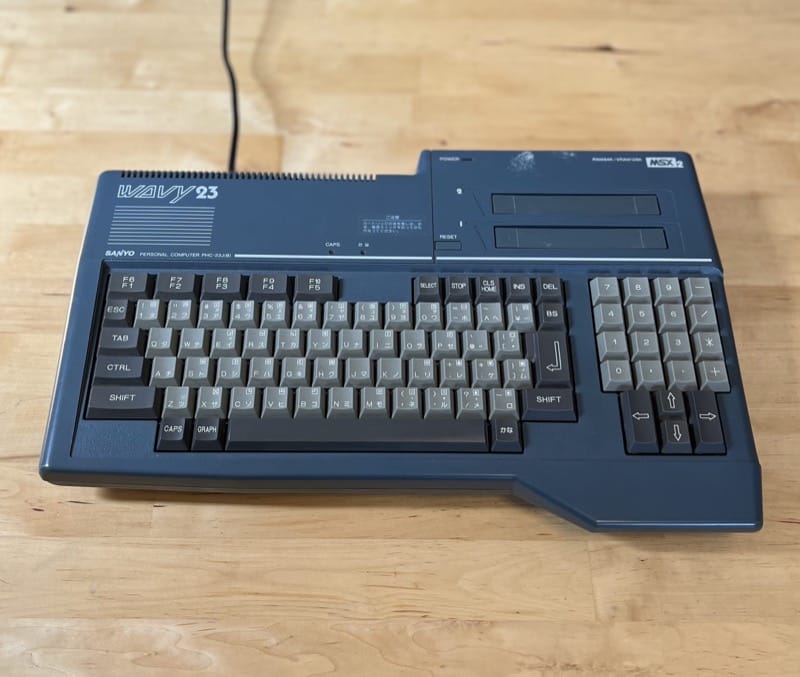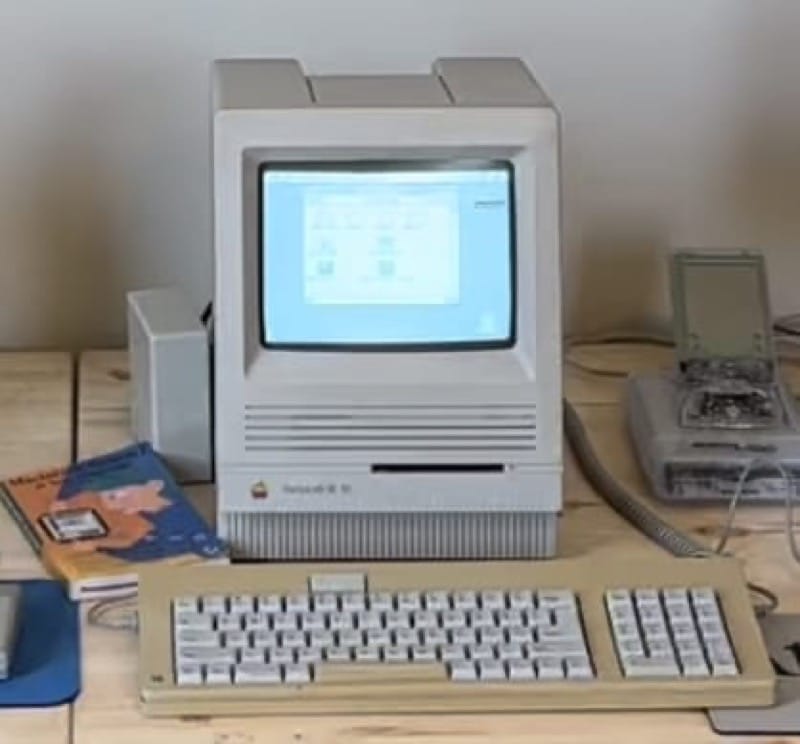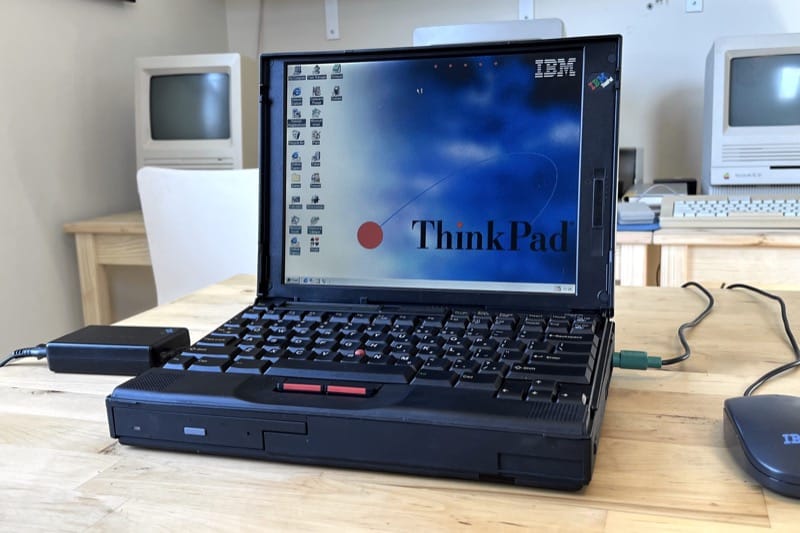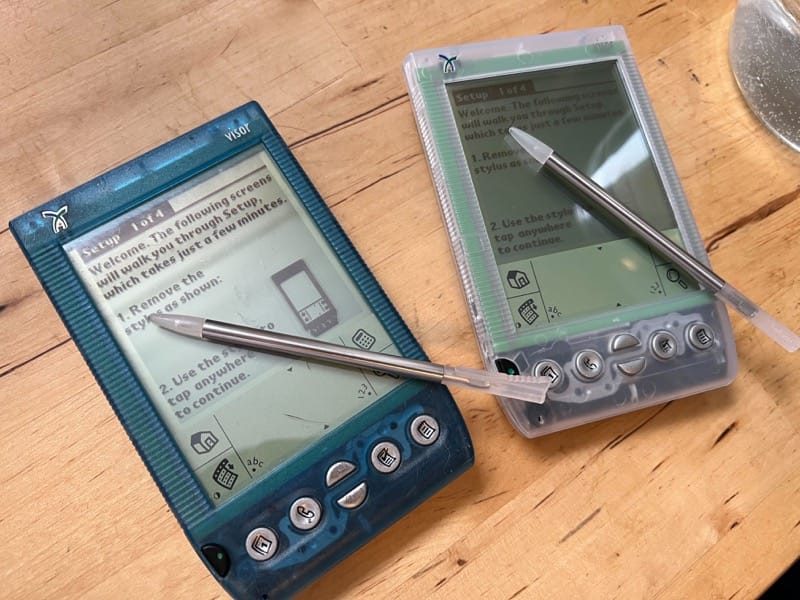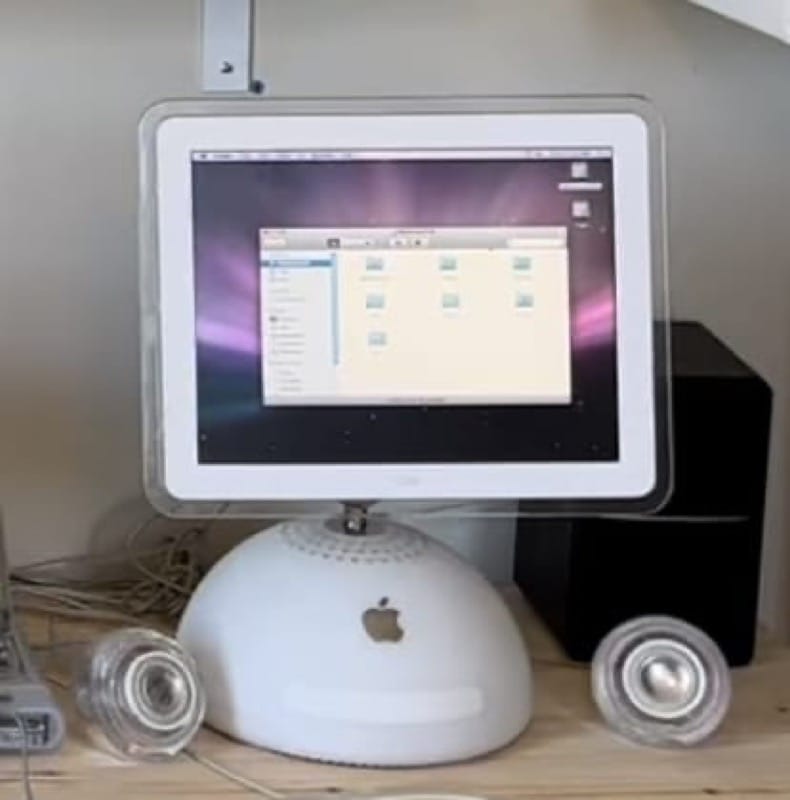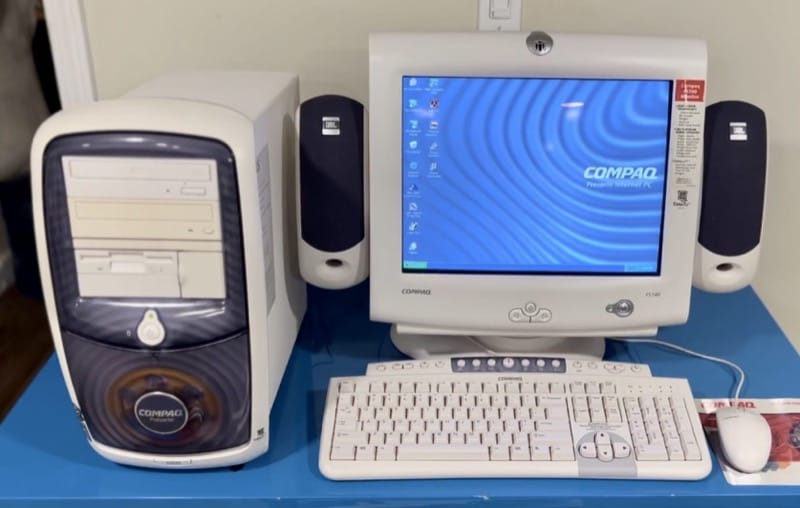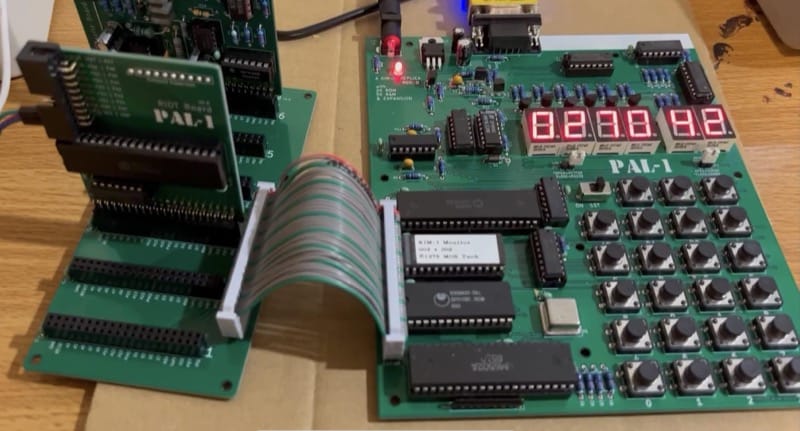IMSAI 8080
The IMSAI 8080 was the first “clone” personal computer. Released in late 1975, the same year as the Altair 8800 (widely considered the first personal computer), the IMSAI was fully compatible with the Altair's bus design. But at the same time the IMSAI improved on the Altair it in a number of ways, including a better power supply, more card slots, more ergonomic toggle switches, and, in my opinion, a much better looking design.
The base machine consists of little more than an interface to an Intel 8080A processor and some RAM, which you can directly inspect, edit, and control by directly from the front panel by entering memory address and machine code in binary. In most cases you would have additional boards for serial communication with a video terminal or teletype, and either a floppy disk controller or cassette interface for loading and storing programs and data.
Although you can toggle in bare metal programs directly into memory, a much easier and more powerful option for this and later S100 computers is to run the CP/M operating system.
I was very excited to pick up this iconic computer at Vintage Computer Festival Midwest, along with an ADM-5 terminal and a few S100 cards to go with it.
Peripherals & Upgrades
- ADM-5 Video Terminal
- CCS 2422 Multimode Floppy Disk Controller
- Cromemco TU-ART Serial/Parallel Board
- MITS 88-2 SIO Serial Board
- Seals 8K Static RAM
- Tarbell 1001 Cassette Interface rev. D
